For millions of years, various species of sea turtles have been lazily swimming in the Atlantic Ocean off the coast of Florida, engaging in their biological destiny to hunt for food, find a mate, and lay their eggs on sandy beaches. The turtles have always had natural predators, mainly tiger and bull sharks. But as human civilization advanced, the dangers lurking in the water increased; today, sea turtles can fall victim to speeding boats, fish hooks, and garbage dumped in the ocean.
As a result, sea turtles wind up with a variety of injuries and ailments—everything from slashed shells to plastic bags in their stomachs to mysterious tumors. Sick and hurt animals are frequently discovered by people who call police or animal welfare agencies. Each year, about 100 sea turtles end up at the Turtle Hospital, an invigorating operation located on Overseas Highway in Marathon, Florida. The facility provides more than medical care to injured animals—it also educates humans, with daily tours and ongoing outreach efforts.
I visited the nonprofit Turtle Hospital with my wife and our two children in January, during a visit to Key West. The one-hour drive north from the tourist-laden island is lovely, passing over sparkling Atlantic waters and the architectural marvel that is the Seven Mile Bridge. The hospital sits behind an unassuming, green-fronted building, and is easy to miss if you’re not paying attention.
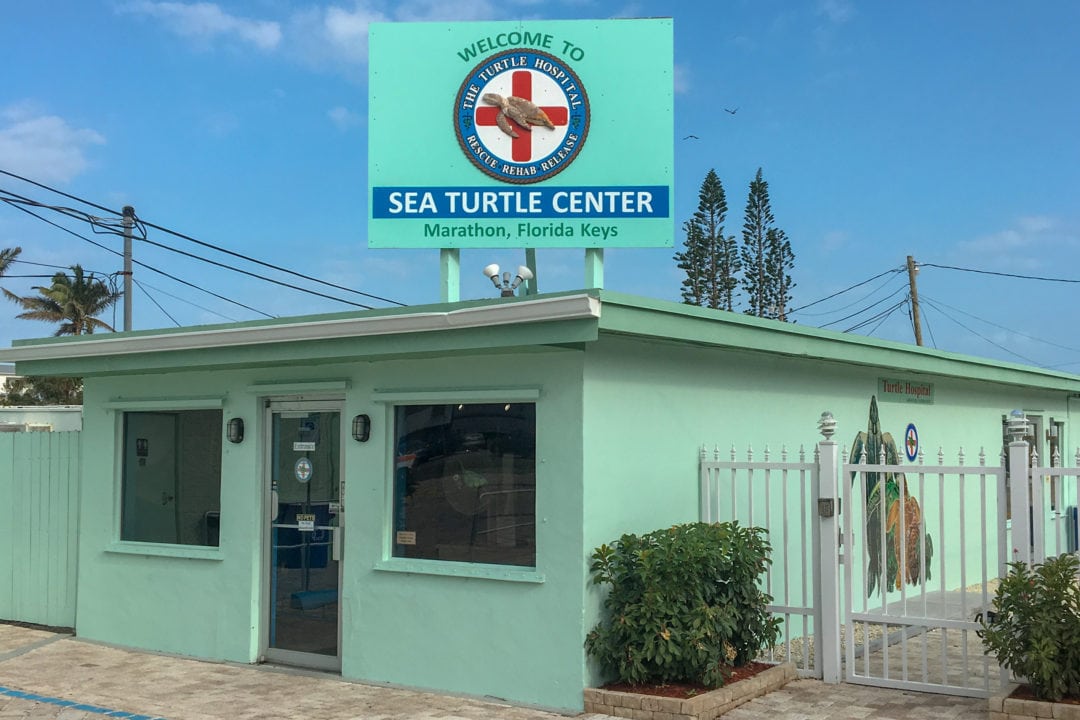
Medical mission
The Turtle Hospital, founded in 1986, is a sprawling facility on a site that, in the past, held a motel and what manager Bette Zirkelbach calls a “girly club.”
“[The Turtle Hospital] was a good repurpose of the old building,” Zirkelbach says.
Reservations are recommended, and 90-minute guided tours start in a room with a video screen and a staffer who provides an overview. A variety of shells are affixed to the walls—the replica of a leatherback shell is the size of a car hood.
The hospital’s mantra of “Rescue, Rehab, Release” is readily apparent. I learn that sea turtles are sort of the billy goats of the ocean: If they’re hungry, they’ll eat just about anything, including bags, straws, plastic gloves, shoes, coins, and other things that people carelessly dump into the ocean. These items can wind up in a turtle’s intestines and cause an impaction, or blockage, which can require surgery.
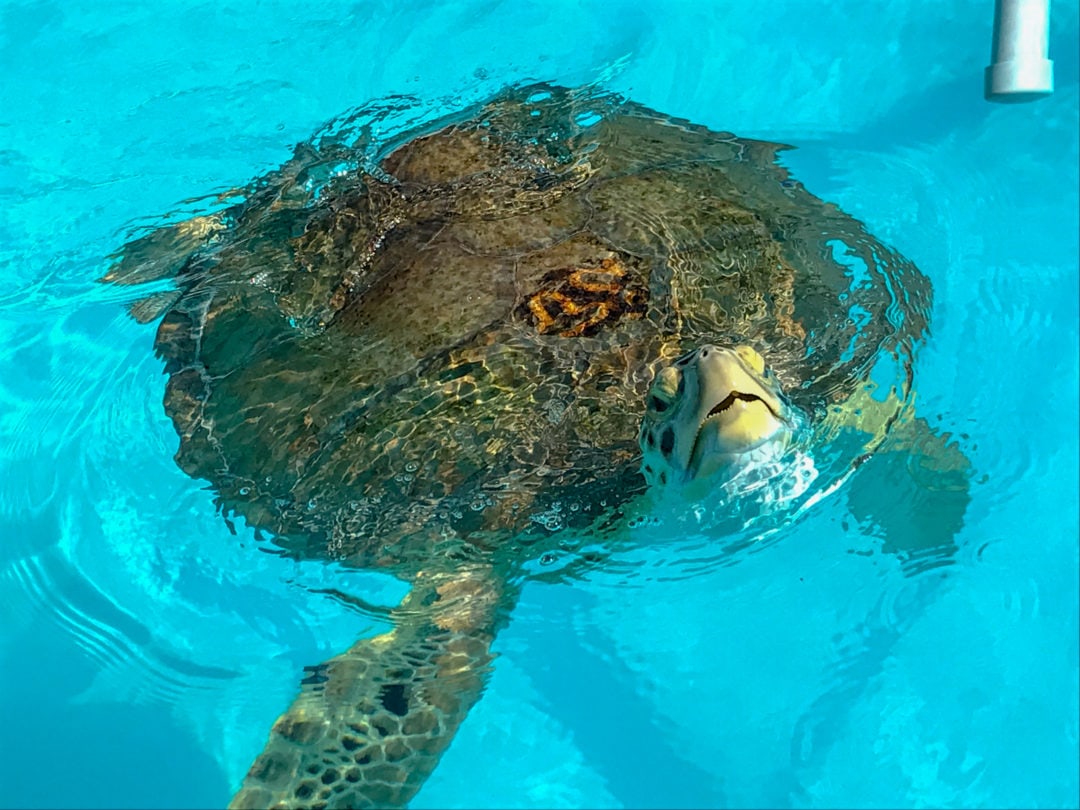
Other turtles arrive with fish hooks in their guts or fishing lines—prevalent in the Florida Keys—wrapped around a flipper, which limits the ability to swim; if circulation is hampered it can lead to amputation. Some turtles are attacked by sharks, and others have shells damaged from an encounter with a boat or propeller. Still others are covered in bulbous tumors, the result of a virus called fibropapilloma (FP for short).
The turtles are treated in the next stop on the tour, the surgical suite. With its operating table, high-tech machines, and video screens it is reminiscent of the type of operating room humans would visit. Zirkelbach says operations take place about six days each month, and visitors who arrive when they are happening can watch the surgeons and support staff providing care.
“We’re a working hospital,” Zirkelbach says.
On to the tanks
Turtles brought to the facility generally spend anywhere from two months to two years in treatment and recovery until they are strong enough to return home. The Turtle Hospital sends 50 to 75 animals back to the ocean annually, and holds frequent celebratory “release” events that are open to the public; one in January involved a group of Tibetan monks helping return a loggerhead named Drifter back to the water.
The next stop on the tour is a pair of 30,000-gallon “rehabilitation” tanks for turtles who have been treated, allowing staff to monitor them until they are judged ready for release. “That’s kind of their last step before they are returned to the sea,” Zirkelbach says.
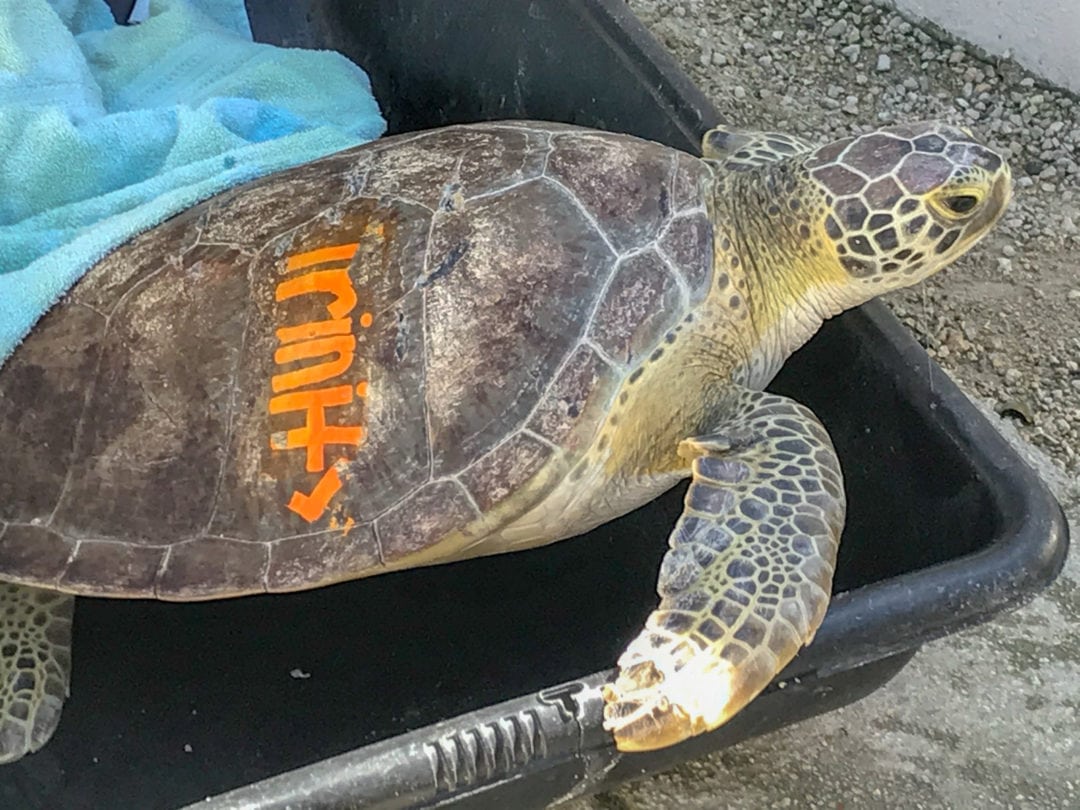
Watching the creatures swim, surface, and submerge is both peaceful and powerful. While other activities in the Keys, from boat trips to parasailing, may provide glimpses of the majestic creatures from a distance, I realize I’ll likely never again be this close to a sea turtle.
Zirkelbach says the creatures often spark a deep reaction from visitors. “I think they are ancient mariners, and when you look into their eyes you are pretty much looking into the eyes of a dinosaur,” she says. “I feel like there is a connection when we look at a sea turtle.”
The tour continues past a battery of 23 tanks that range from 150 to 800 gallons. These are for turtles in the midst of treatment, and each has a sole occupant. It’s common to see some of the approximately 20-person staff taking turtles out of a tank for a shell scrubbing or other treatment.
Most turtles have the names that the staff uses for them scrawled on the back of their shell. The monikers are selected by the person who finds the turtle, and vary from the human-like Nicky and Heather to the sea-evoking Starfish. Then there are the head-scratchers, among them Gumby and DJ Rick.
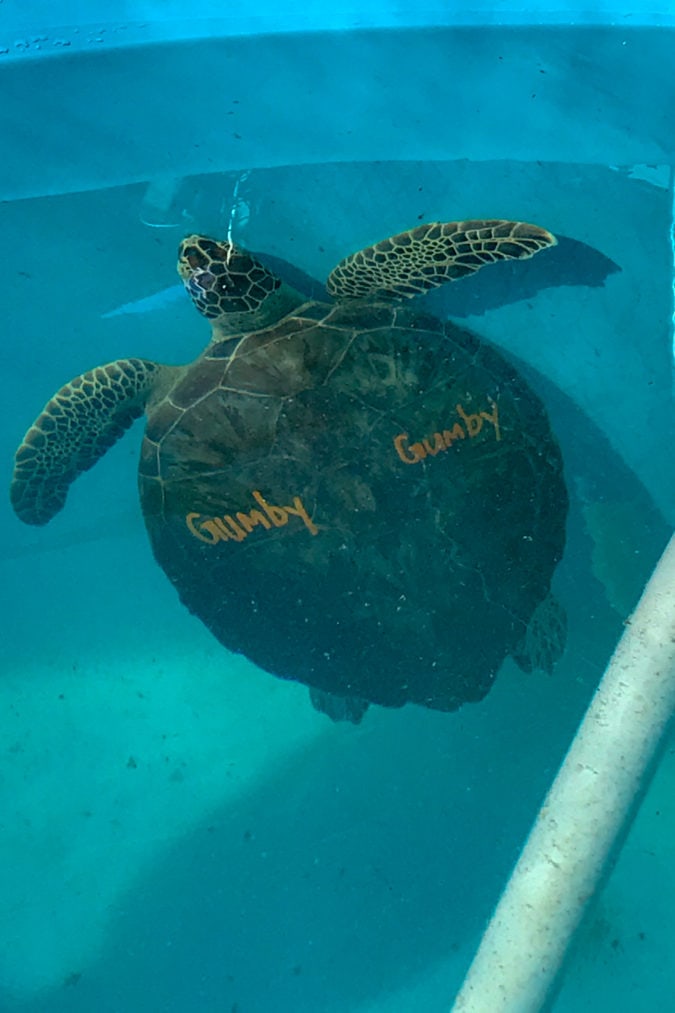
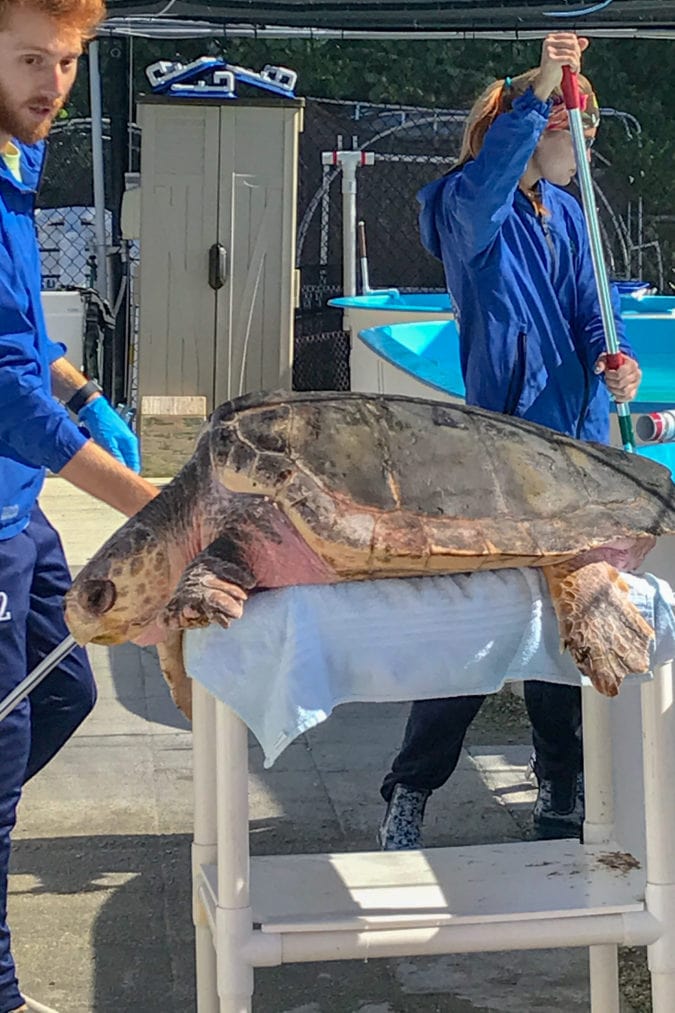
Feeding time
The final stop on our tour is a 100,000-square-foot pool; a wide pipe connects to the nearby ocean and funnels in fresh salt water. This was the motel’s swimming pool, and it’s a surprising marvel. The pool houses the Turtle Hospital’s permanent residents, the creatures deemed unable to survive in the wild (other turtles who can’t return to the ocean go to zoos or aquariums). Some are missing multiple flippers. Others suffer from “bubble butt syndrome,” a term for animals who have a build-up of air, and possible nerve damage, that makes them float and unable to dive. While non-harmful lead weights can be added to their shells in this tank, in the wild the weights would eventually fall off.
This is where visitors are given pellets to feed the turtles, a process that delights my daughter, who alternately tosses a single piece to a specific turtle, and throws a scattering in the vicinity of multiple animals, leading to a sort of who-gets-there-first food race.
Some turtles have been here for decades, including Bubble Butt himself, who arrived after being hit by a boat in 1989. He weighs more than 110 pounds and shares space with other residents who will live out their days at the hospital—they include the mostly-blind April, here since 1991, and Montel, who lost one front flipper to an entanglement, and half of another to a shark attack. He also lost an eye to an FP tumor.
That ability to survive stands out for Zirkelbach. “They’re resilient,” she says. “We see them respond to treatment well when we put a lot of care into them, and we can pull a lot of them through. It’s no wonder they’ve survived our planet for 100 million years. It’s important. What we’re doing here is mitigating for all that human impact in our oceans. The turtles have survived our planet for so long that it would be horrible to see this species go extinct on our watch. It’s a big responsibility.”
If you go
The Turtle Hospital is open daily from 9 a.m. to 6 p.m. with tours every hour on the hour from 9 a.m. to 4 p.m.






